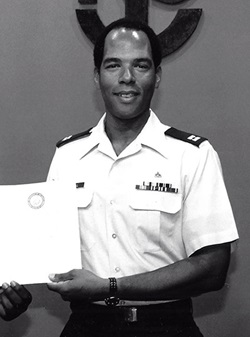By Leigh McLeod

Northrop Grumman Mission Assurance Manager Otis was unsure of his future when the college he was attending dropped aerospace engineering from its curriculum. His dream of becoming an aerospace engineer and astronaut seemed out of reach. Then one night, while attending a basketball game at Louisiana State University (LSU) in Baton Rouge, he had a revelation in the form of a marching band.
The visiting team’s band, the Human Jukebox of Southern University and A&M College (Southern University) “blew the roof off the arena,” Otis said. Intrigued, he drove across the Mississippi River to learn more about the school and its aerospace engineering program and discovered that, as one of 107 Historically Black Colleges and Universities (HBCUs), Southern University is part of a heritage going back nearly 150 years.
Otis transferred to Southern University, earning a mechanical engineering degree. He credits his alma mater — with its community feel, unique mix of professors and curriculum that accounted for the cultural barriers many Black students face — with helping him achieve his goals.
“The ability for us to command and control vehicles that are flying 22,000 miles above the Earth and getting the responses that you request was really cool.”
— Otis, Mission Assurance Manager
Operational Exploitation Systems
“The culture was different,” said Otis, who was a member of the National Society of Black Engineers, a student-run organization centered on improving the recruitment and retention of Black and other minority engineers in both academia and industry. “It was more of a family culture versus an academic culture. I made a lot of good friends there.”
Otis continued to attend Reserve Officers’ Training Corps (ROTC) at LSU Baton Rouge and after graduating from Southern University was commissioned into the Air Force. Otis hoped a commission and an engineering degree would help him become an astronaut and, while he never joined NASA, his military career did involve space.
“I entered the Air Force as a navigator. An opportunity came to join a new initiative the Air Force was starting called Satellite Command and Control Officer at Sunnyvale Air Force Station in San Jose, California,” Otis said. “The ability for us to command and control vehicles that are flying 22,000 miles above the Earth and getting the responses that you request was really cool.”
Otis retired from the Air Force after 23 years and joined Northrop Grumman. Eighteen years later, he now heads up mission assurance for the company’s Operational Exploitation Systems operating unit.
He’s particularly proud to work at a company that supports HBCUs like his alma mater; Northrop Grumman hosts an annual event for HBCU students interested in entry-level and internship opportunities, the Northrop Grumman HBCU Invitational. Otis said that when he meets with HBCU students or early career graduates, he encourages them to apply to Northrop Grumman.
“This is a place where you can thrive, a place where you are not dismissed, a place where your opinion matters,” he said.
Learn more about Northrop Grumman’s support of HBCUs, as well as our commitment to diversity, equity and inclusion.
Read more stories about Life at Northrop Grumman.